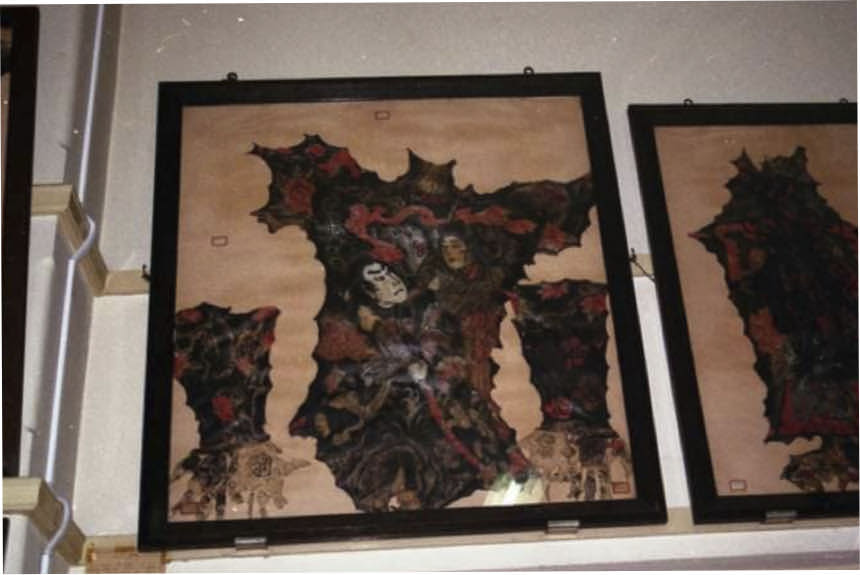Human Skin Collection Tokyo, Japan

The Pathology Department of Tokyo University, has the largest collection of tattooed human skin in the world. Dr Masaichi Fukushi – Doctor of Medicine and founder of the tattooed skin collection that is housed in the Pathology Department of Tokyo University was born in 1878.
Fukushi first became interested in tattooing when his research into the study of moles on human skin (in 1907) brought him into contact with many people with tattoos – discovering that he could compare the pigment movement of moles much easier by studying the (pigment) movements from skin that had been tattooed and Subsequently discovered that penetrated skin via needles helped to stop the recurrence of Syphilis on a newly tattooed area of skin, prompting a further interest in the art of tattooing.
And it was in 1920 when Dr Fukushi took up a position at the ‘Mitsui Memorial Hospital’ in down town Tokyo – where he came across many of the tattooed people that would help him in his lifetimes work – The ‘Mitsui’ was a charity run Hospital where the poorer classes of Japanese society would go to for treatments – A fact that brought Dr Fukushi into a lot of contact with the tattooed.
And after a brief period spent in Germany – Fukushi returned to Japan and took up a post at the ‘Nippon Medical University – where he continued his research into skin pigment and the congenital growth of moles – as well as once again studying the tattooed skins of the dead and living. He was also (at the ‘Nippon) able to find a way of treating and preserving (just) the dermal layer of skin containing the tattoo and to stretch and place the Skins of the dead into glass frames, which was done also for the benefit of the Medical profession to study.
It must also be said that Dr Fukushi became very interested in the tattooed people themselves – and with some of the more unfortunate who fell on hard times – Fukushi would even help to pay for unfinished tattoos to be completed – in return for the ownership rights after death – to which of course many of the tattooed were only to willing to give – rather then having to live with the disgrace and loss of honour in having uncompleted tattoo’s.
By doing this and with his work with tattooed people – Fukushi became very well respected and admired by many of Tokyo’s top tattoo artists, and even judged at tattoo conventions in the district and abroad. For in 1927 and 1928 Fukushi took his work overseas to the west. Giving lectures on pigmentation, as well as spreading the word of Japanese tattooing in the process. Unfortunately on one trip to America one of the doctor’s trunks of tattooed skin was stolen in Chicago never to be seen again – even though a reward was offered at the time for the return of the said items.
During his lifetime Dr Fukushi built up a collection of over 3000 photographs of his work along with catalogues (full) with the records of all the details of the owners of his tattooed skins. Sadly much of this became lost in the 1945 bombings of the city of Tokyo during the Second World War – which destroyed the University buildings. Luckily the skins themselves were stored in a different location and were saved and can still be seen today. Also in the 1940’s and 50’s many magazine and newspaper articles appeared – telling of Fukushi work – Including America’s ‘Life’ magazine of March the 11th 1946.
Later the ownership of the tattooed skin collection passed to Dr Fukushi’s son Kalsunari – a pathologist studying cancer and who also shared his father’s love of the tattooed and tattooing. Hardly surprising considering that when Kalsunari was a young boy, he visited many Japanese tattooing studios with his father. Kalsunari Fukushi has also published many papers and articles on the subject of tattooing over the years and in the books ‘Japanese Tattooing Colour Illustrated’ (1972) – and ‘Horiyoshi’s World (1983) Kalsunari describes his fathers work and passion for the art of tattoo.
And in Don Ed Hardy’s quality tattooing publication ‘TattooTime’ (volume 4, number 1) a superb article appeared on the subject of the skin collection entitled ‘Remains To Be Seen’ in 1987. Kalsunari also collected over 20 tattooed skins himself – and it’s believed that the (Tokyo) University has 105 in its collection – many with full body suits. Tokyo’s University medical department still exists but it is not open to the public – although at times appointments are sometimes granted to people (mainly doctors and the like) to view the tattooed items in this most special of places in regards to tattooing history.
Copyright…Paul Sayce…
Posted 31st March 2009


